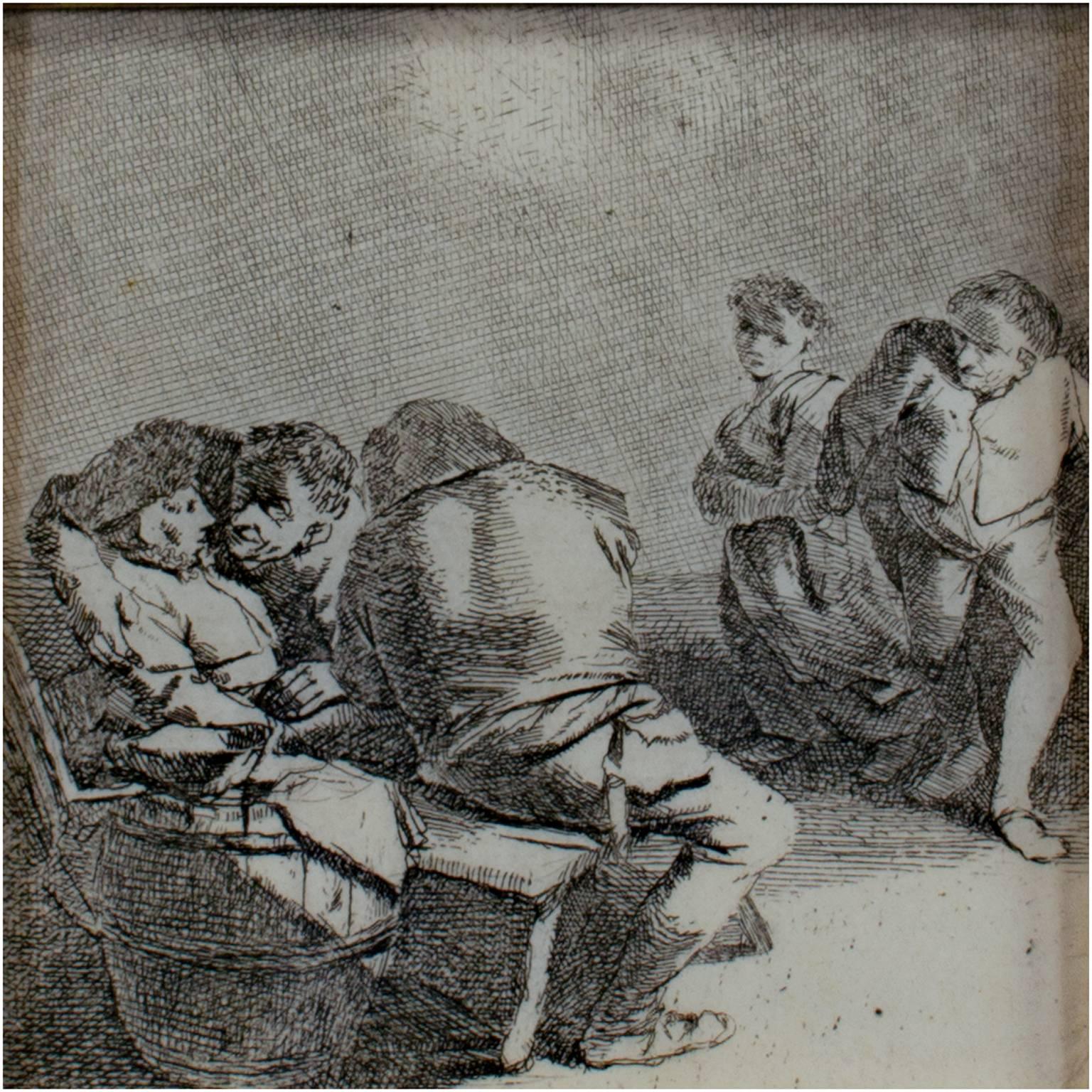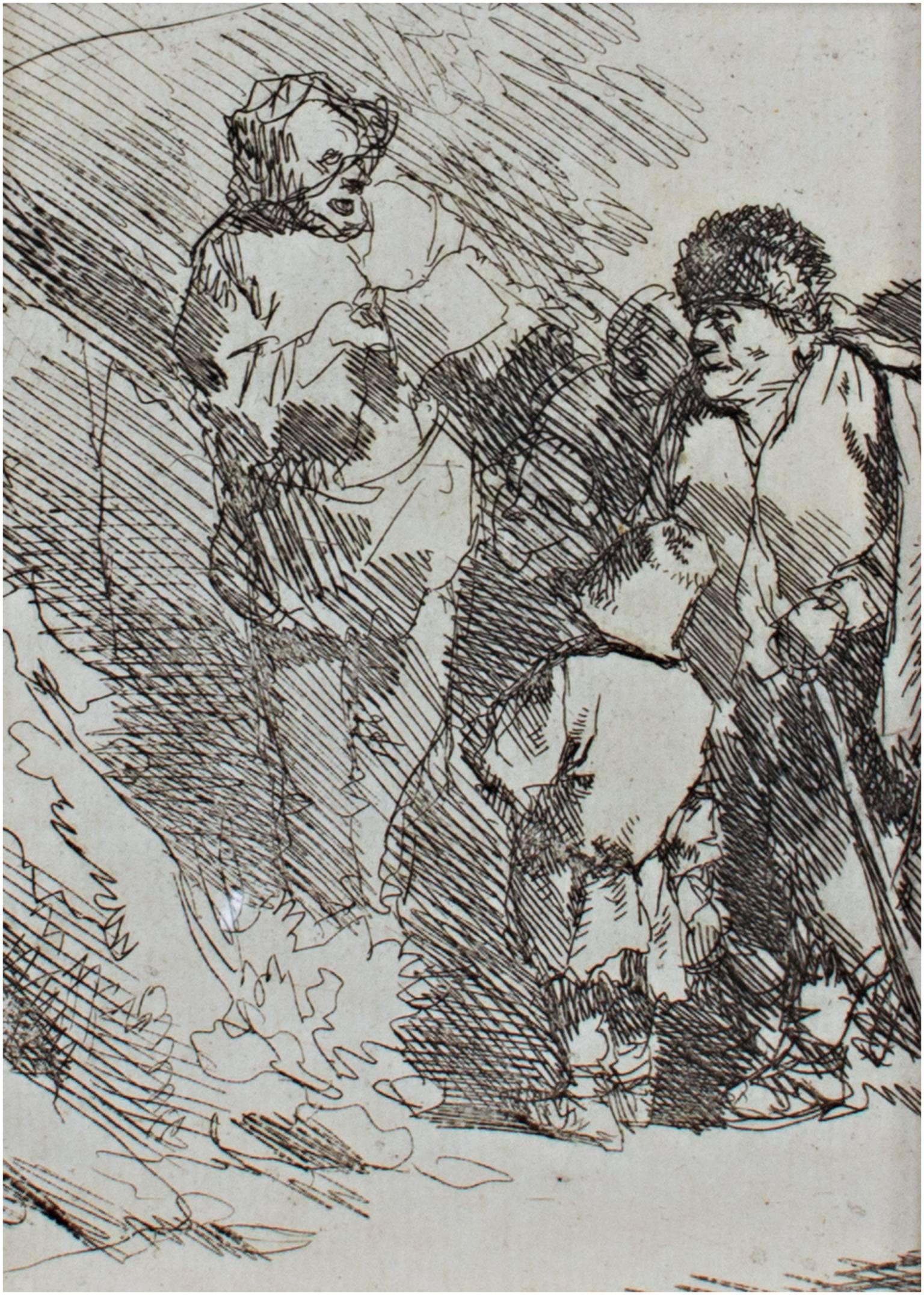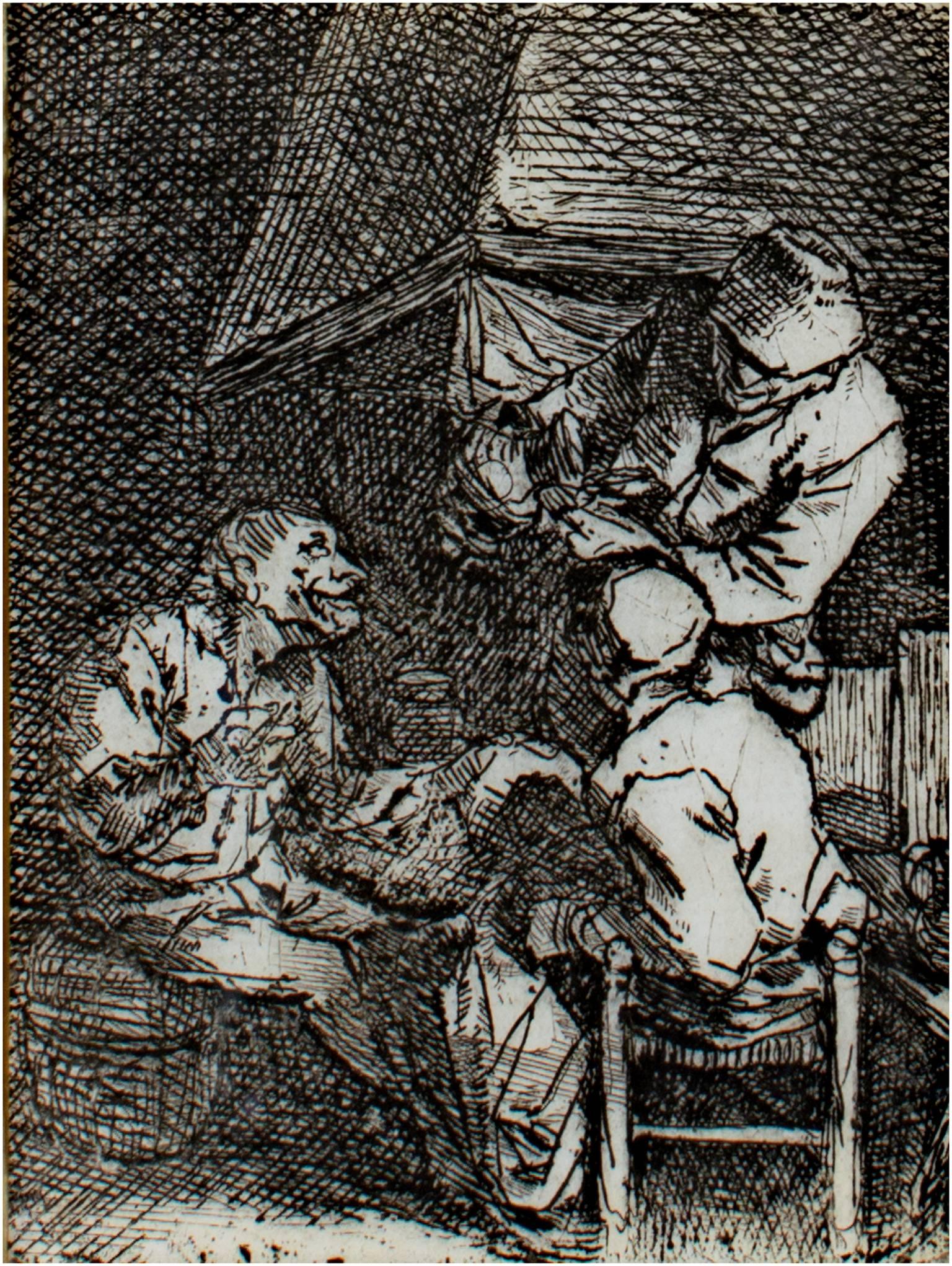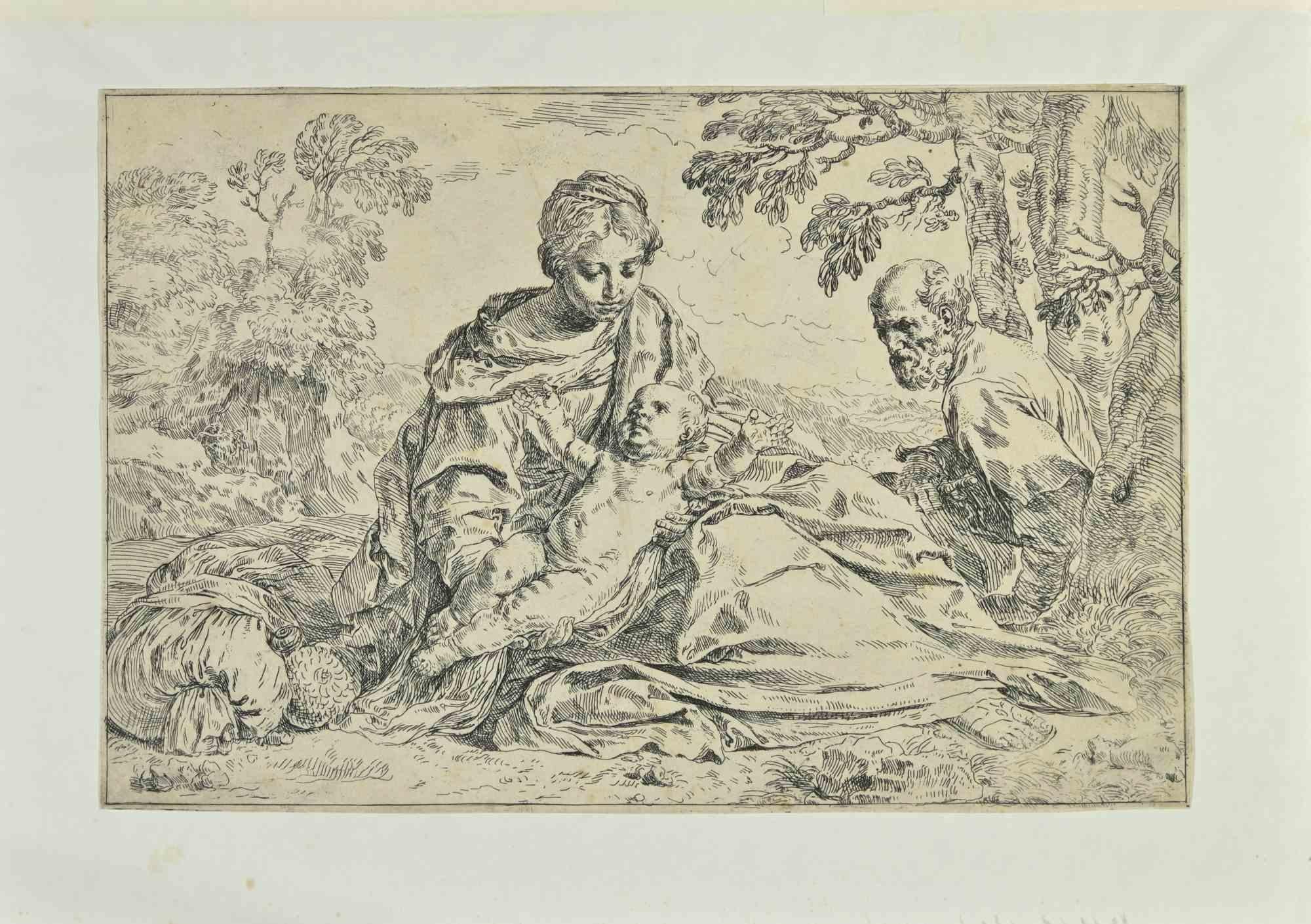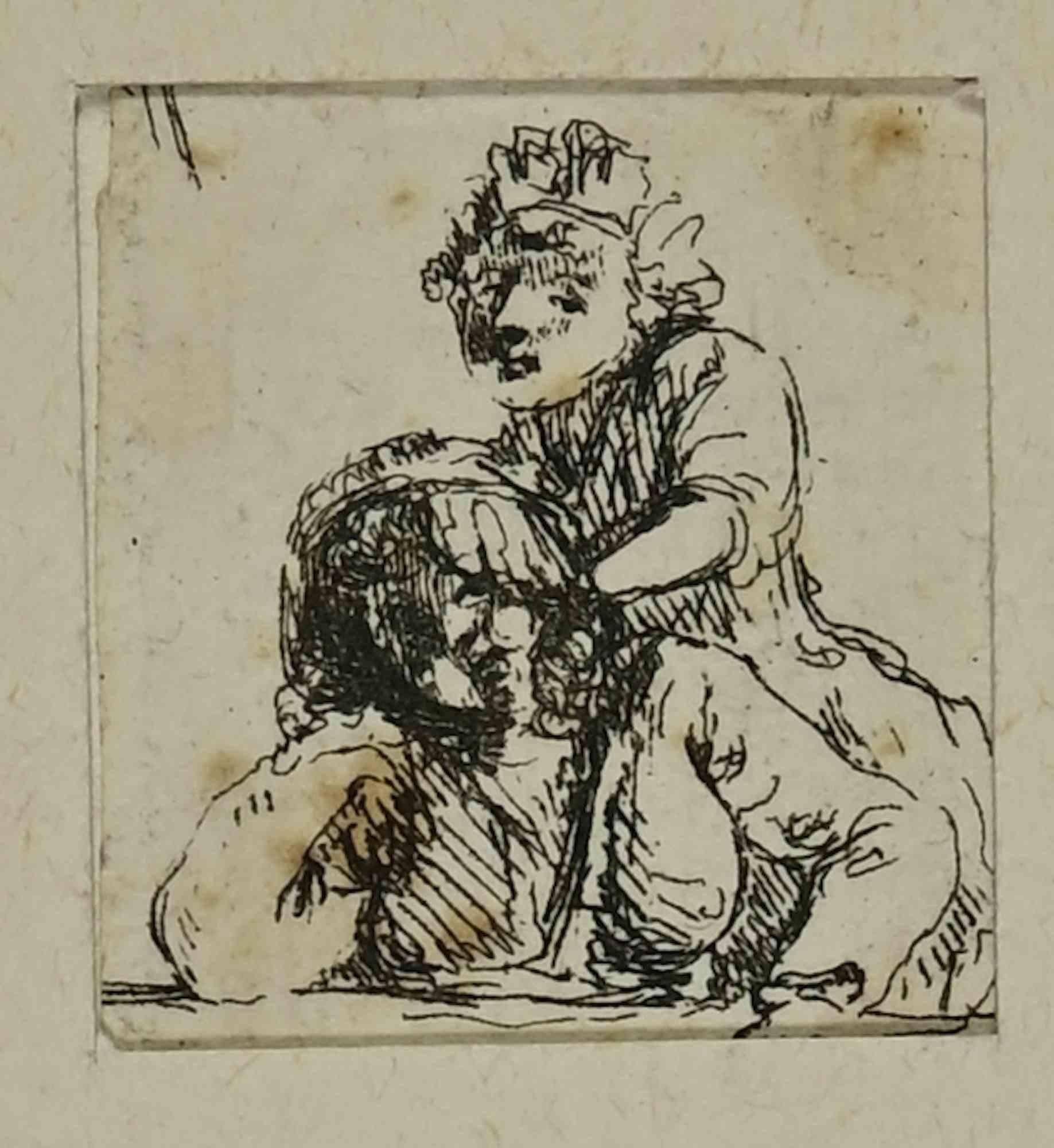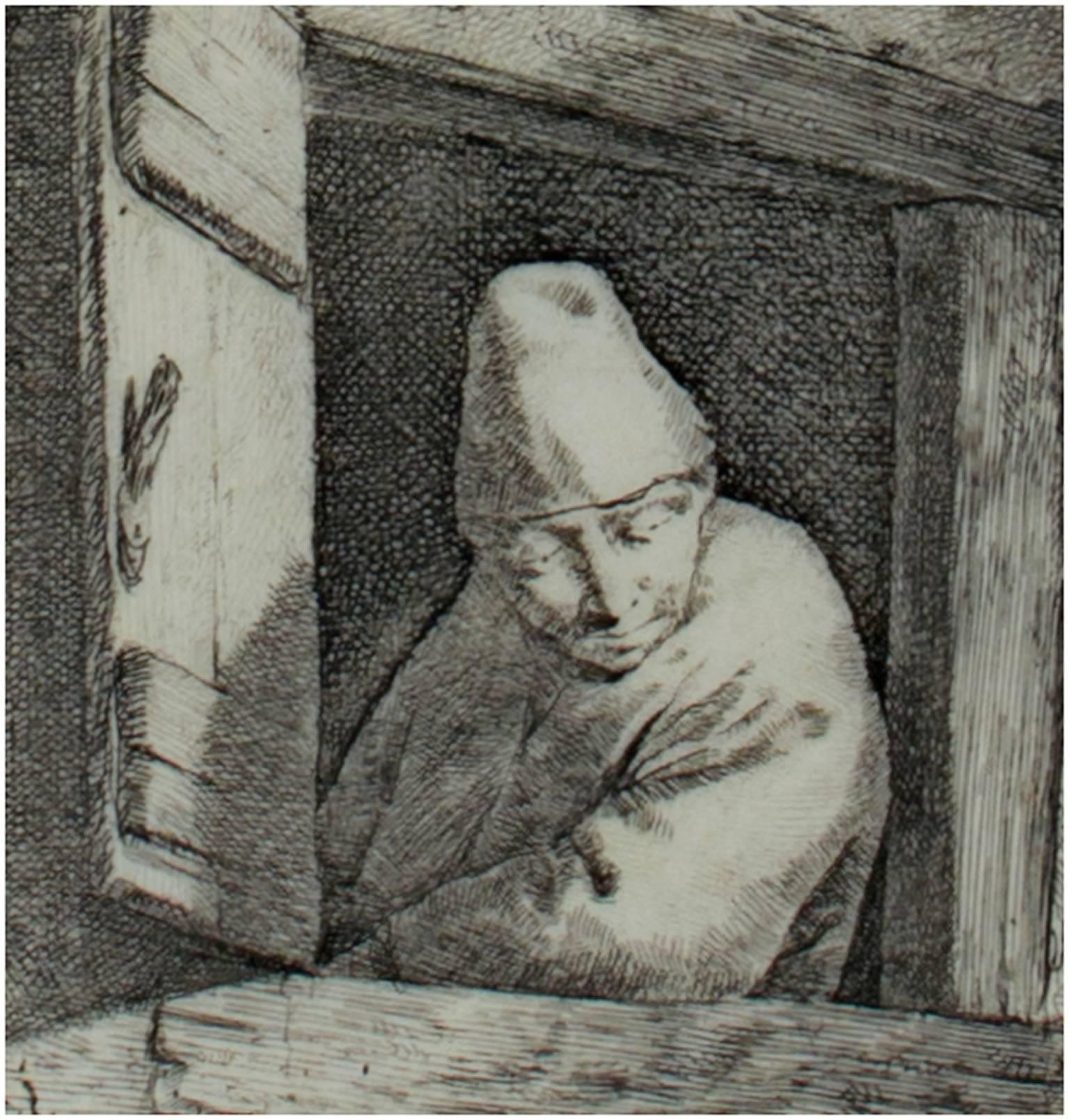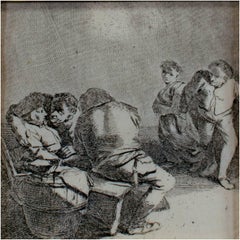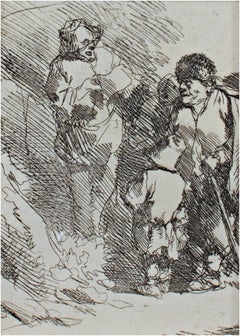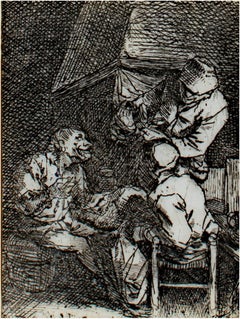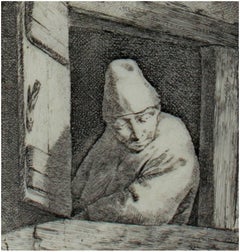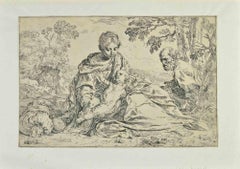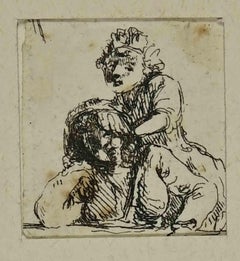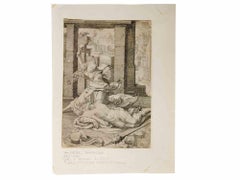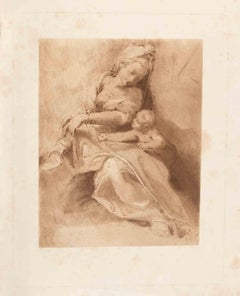Items Similar to 17th century etching black and white mother and child figures scene
Want more images or videos?
Request additional images or videos from the seller
1 of 8
Cornelis Bega17th century etching black and white mother and child figures scenecirca 1650
circa 1650
$3,375
£2,619.81
€2,971.69
CA$4,818.96
A$5,310.11
CHF 2,754.27
MX$63,156.59
NOK 34,840.66
SEK 32,638.31
DKK 22,194.06
About the Item
"Mother & Child" is an original etching by Cornelis-Pietersz Bega. It depicts a mother and her child. Publisher: Pearce #51.
3" x 3" art
13 3/4" x 11 3/4" frame
Cornelis Pietersz Bega, or Cornelis Pietersz Begijn (1631/1632 - 27 August 1664) was a Dutch Golden Age painter and engraver. Bega was born, lived and worked in Haarlem and was the son of sculptor and goldsmith Pieter Jansz. Begijn. His mother Maria was the illegitimate daughter of the Haarlem painter Cornelis van Haarlem. He assumed the name Bega when he started working professionally. He was a student of Adriaen van Ostade, and produced genre scenes of similar subjects, typically groups of a few peasant figures, often in interior settings, or fanciful figures such as The Alchemist (Malibu) or The Astrologer (London).
- Creator:Cornelis Bega (1631 - 1664, Dutch)
- Creation Year:circa 1650
- Dimensions:Height: 13.75 in (34.93 cm)Width: 11.75 in (29.85 cm)
- Medium:
- Movement & Style:
- Period:Mid-17th Century
- Condition:
- Gallery Location:Milwaukee, WI
- Reference Number:Seller: 10607g1stDibs: LU60532826143
About the Seller
4.9
Gold Seller
Premium sellers maintaining a 4.3+ rating and 24-hour response times
Established in 1966
1stDibs seller since 2017
452 sales on 1stDibs
Typical response time: 1 hour
- ShippingRetrieving quote...Shipping from: Milwaukee, WI
- Return Policy
More From This Seller
View All17th century etching black and white indoor dramatic figures scene
By Cornelis Bega
Located in Milwaukee, WI
"The Meeting" is an original etching by Cornelis-Pietersz Bega. It depicts a confrontation between two groups of figures. Publisher: Pearce #48.
2 3/4" x 2 3/4" art
10 1/4" x 10 3/8...
Category
Mid-17th Century Old Masters Figurative Prints
Materials
Etching
17th century etching black and white figures scene
By Cornelis Bega
Located in Milwaukee, WI
"The Singer" is an original etching by Cornelis-Pietersz Bega. It depicts a performer and onlookers. Publisher: Pearce #50.
4" x 3" art
16 1/2" x 13 1/2" frame
Cornelis Pietersz Be...
Category
Mid-17th Century Old Masters Figurative Prints
Materials
Etching
17th century etching black and white indoors table figures scene
By Cornelis Bega
Located in Milwaukee, WI
"The Conversation" is an original etching by Cornelis-Pietersz Bega. It depicts three men conversing in a dark interior. Publisher: Pearce #43.
3" x 2 1/4" art
12 3/4" x 11 5/8" fra...
Category
Mid-17th Century Old Masters Figurative Prints
Materials
Etching
17th century etching black and white dramatic window figure scene
By Cornelis Bega
Located in Milwaukee, WI
"Man Looking Through a Window" is an original etching by Cornelis-Pietersz Bega. It depicts a figure leaning through a window. Publisher: Pearce #37.
3 1/8" x 3" art
14 3/4" x 13 1/...
Category
Mid-17th Century Old Masters Figurative Prints
Materials
Etching
17th century etching black and white figurative character print expressive
By Jan Gillisz van Vliet
Located in Milwaukee, WI
Jan Gillisz van Vliet (1605–1668) was a Dutch Golden Age artist and student of Rembrandt. He worked with Rembrandt between 1628 and 1637, inspired by his master's work. Like Rembrandt, van Vliet made a series of beggar figures, though often with a greater degree of satire and expressiveness. For example, this image of a rat catcher...
Category
1630s Old Masters Figurative Prints
Materials
Etching
17th century etching black and white figure table tobacco pipe scene
By Cornelis Bega
Located in Milwaukee, WI
"The Pipe Smoker" is an original etching by Cornelis-Pietersz Bega. It depicts a man sitting at a table with his pipe. Publisher: Pearce #38.
3 1/2" x 3 1/4" art
13 5/8" x 11 3/4" f...
Category
Mid-17th Century Old Masters Figurative Prints
Materials
Etching
You May Also Like
Rest on the flight into Egypt - Etching by Simome Cantarini - 1640 ca
Located in Roma, IT
Rest on the flight into Egypt is an etching by Simone Cantarini executed around 1640. Cantarini also made a painting with the same subject now at the Louvre Museum.
The dimension...
Category
1640s Old Masters Figurative Prints
Materials
Etching
Two Girls - Engraving after Rembrandt - 19th Century
By Charles Amand Durand
Located in Roma, IT
Two Girls is an engraving on ivory-colored paper realized after an etching after Rembrandt by Charles Amand-Durand. This wonderful piece of art belongs to a late edition of the 19th...
Category
19th Century Old Masters Figurative Prints
Materials
Engraving
Joen and Deborah - Etching by Jan Pieters Saenredam - 17th Century
Located in Roma, IT
Joen and Deborah is an old master artwork realized in 17th Century by Jan Pieters Saenredam.
Black and white etching.
Good condition.
Signature on ...
Category
17th Century Modern Figurative Prints
Materials
Etching
La Vierge et l’Enfant - Etching by Alphonse Leroy - Mid-19th Century
Located in Roma, IT
Etching and aquatint on wove paper, realized after Correggio.
A delicate reproductive print by Alphonse Leroy after a drawing by the Italian Renaissance master Antonio da Correggio....
Category
Mid-19th Century Contemporary Figurative Prints
Materials
Etching
The White Arab - Engraving after Rembrandt - 19th Century
By Charles Amand Durand
Located in Roma, IT
The White Arab is an engraving on ivory-colored paper realized by Charles Amand Durand after an etching by Rembrandt dated 1630. This specimen belongs to an edition of the late 19th ...
Category
19th Century Old Masters Figurative Prints
Materials
Engraving
Portrait of Women and Children - Original Etching by James Neagle - 1810
Located in Roma, IT
Portrait of Women and Children is an original artwork realized by James Neagle for Johann Caspar Lavater's "Essays on Physiognomy, Designed to promo...
Category
1810s Old Masters Figurative Prints
Materials
Etching
More Ways To Browse
August Holland
Salvador Dali Litho
Salvador Dali Lobster
Salvador Dali Mao
Salvador Dali Melting Clock
Salvador Dali Pig
Salvador Dali Shakespeare
Salvador Dali Woman With A Whip
Sascha Schneider
Sean Caulfield
Sebastien Leclerc
Shabbat Shalom
Shag Agle
Shalom Moskowitz Shalom Of Safed
Shepard Fairey Oil
Spoleto Poster
Stag Salvador Dali
Suffering Moses
